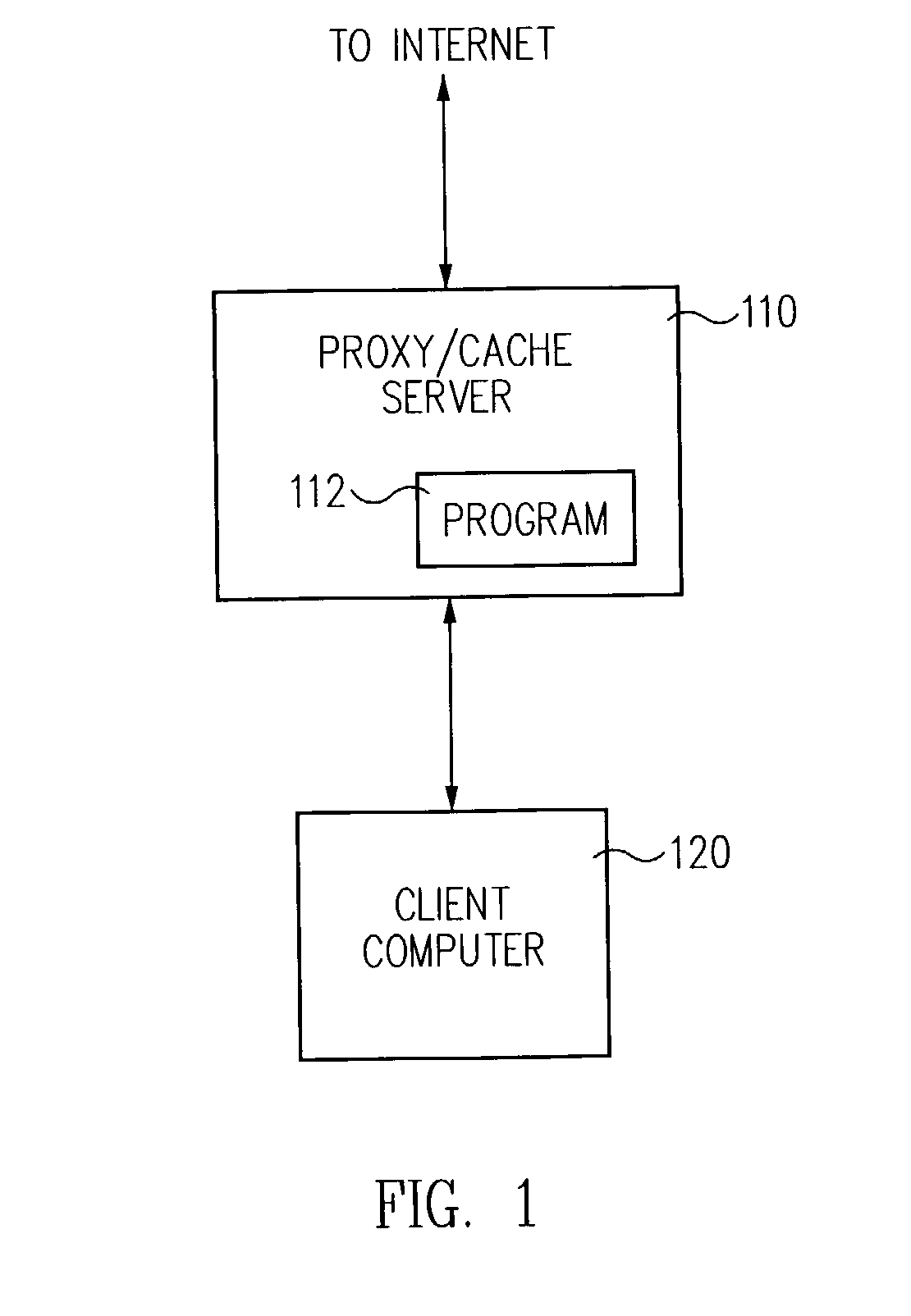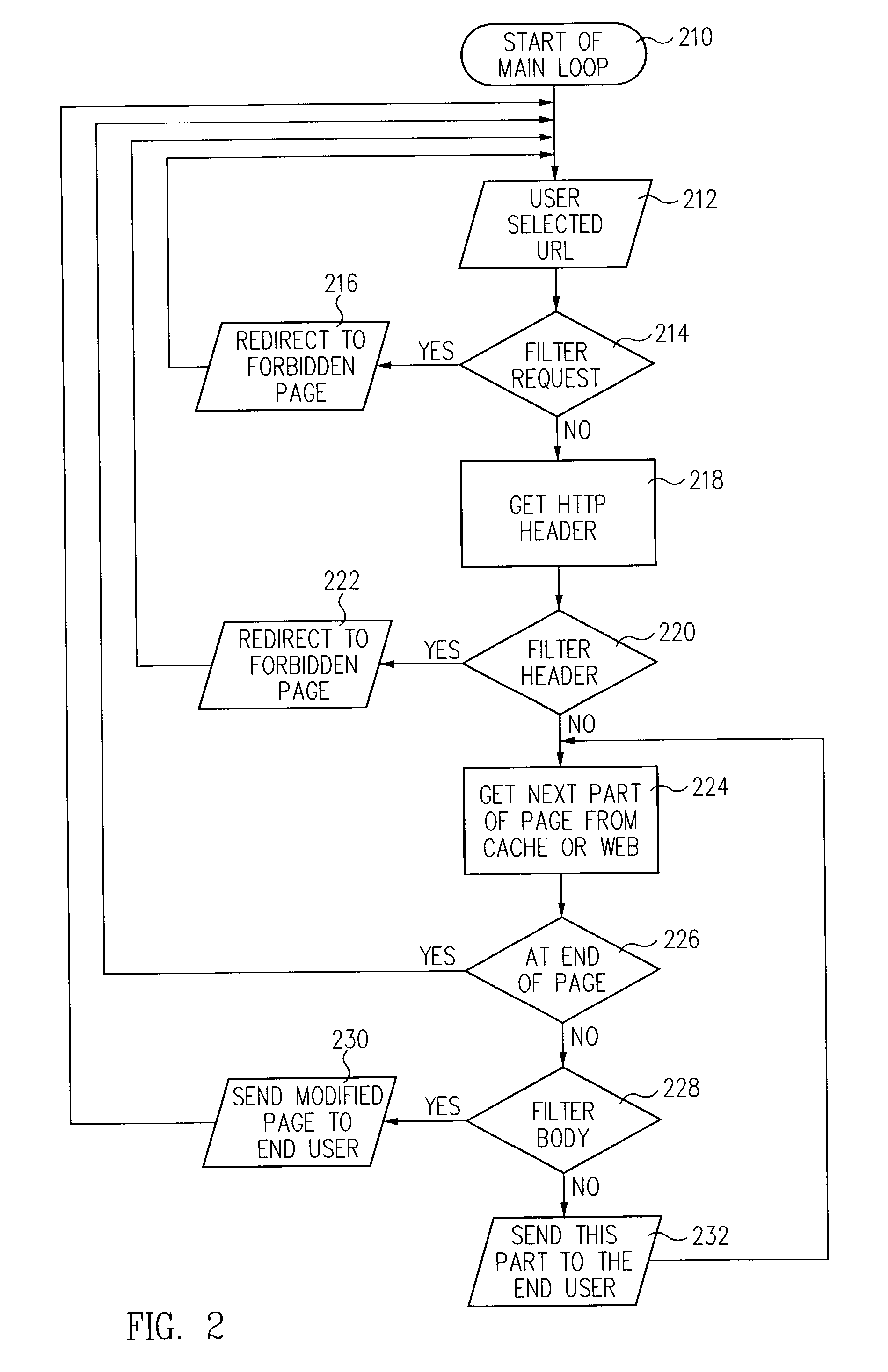System and method for filtering data received by a computer system
a computer system and filtering technology, applied in the field of computer based system and filtering data received by a computer system, can solve the problems of difficult, if not impossible, to identify a particular user beyond any self, and the interconnection presents certain problems
- Summary
- Abstract
- Description
- Claims
- Application Information
AI Technical Summary
Benefits of technology
Problems solved by technology
Method used
Image
Examples
Embodiment Construction
[0031]FIG. 1 shows a block diagram of a preferred embodiment of the system of the present invention. In this embodiment, a proxy / cache server computer 110 is connected to the Internet and is capable of receiving HTTP information over the World Wide Web. A client computer 120 (user's computer) is connected to the server computer 110, typically via an ethernet or modem connection. In accordance with the present invention, server computer 110 runs a computer program 112 which programs the server computer 110 to filter any request it receives for a web page from the client computer 120 and to output to the client computer 120 only those web pages, or portions of web pages, which are deemed appropriate for viewing by the user of the client computer 120. This filtering takes place in at least three stages, as is described below relative to FIGS. 2 through 5, which illustrate the method of the present invention.
[0032]The flowchart in FIG. 2 shows the broad steps of filtering a requested we...
PUM
 Login to View More
Login to View More Abstract
Description
Claims
Application Information
 Login to View More
Login to View More - R&D
- Intellectual Property
- Life Sciences
- Materials
- Tech Scout
- Unparalleled Data Quality
- Higher Quality Content
- 60% Fewer Hallucinations
Browse by: Latest US Patents, China's latest patents, Technical Efficacy Thesaurus, Application Domain, Technology Topic, Popular Technical Reports.
© 2025 PatSnap. All rights reserved.Legal|Privacy policy|Modern Slavery Act Transparency Statement|Sitemap|About US| Contact US: help@patsnap.com



